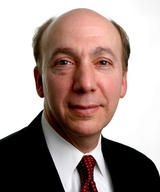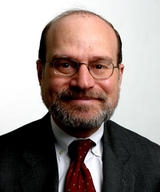Over 15 years ago, in Central Bank of Denver, N.A. v. First Interstate Bank of Denver, N.A. , 511 U.S. 164 (1994), the Supreme Court held that Section 10(b) of the Securities Exchange Act and SEC Rule 10b-5 do not permit private civil plaintiffs to recover on an aiding and abetting theory. Since then, the lower federal courts have struggled to discern the line between conduct giving rise to "primary" liability, for which private plaintiffs may recover, and mere aiding and abetting, for which Central Bank precludes liability. On June 13, 2011, in Janus Capital Group, Inc. v. First Derivative Traders , No. 09-525, the Supreme Court brought a further measure of clarity to this issue. The Court recognized that primary liability under Section 10(b) and Rule 10b-5 rests with the "maker" of an alleged fraudulent statement. Taking a narrow view of the implied private right of action under those provisions, the Court held in Janus that, although many persons and entities may participate in the preparation of a given statement, the "maker" of the statement is only "the person or entity with ultimate authority over the statement, including its content and whether and how to communicate it." Janus , slip op. at 6.
The Janus case arose from regulatory investigations into market timing of mutual fund shares in several large fund families.1Plaintiff is a shareholder of Janus Capital Group, Inc. ("Janus Capital"), a public company whose subsidiary Janus Capital Management LLC ("JCM") provides investment advisory and management services to the Janus family of mutual funds. Plaintiff alleged that the prospectuses for the Janus funds misleadingly stated that the funds had and enforced policies designed to prevent market timing. Plaintiff further alleged that, when it came to light that the funds in fact permitted select investors to engage in market timing, other investors withdrew assets from the funds. As a result, according to the complaint, the value of JCM's advisory and management business, and hence the market price of Janus Capital shares, declined. Based on the alleged misstatements in the mutual fund prospectuses, plaintiff asserted claims under Section 10(b) and Rule 10b-5 against Janus Capital and JCM, on behalf of a purported class of Janus Capital shareholders.
On appeal from a district court order dismissing the case, a panel of the Fourth Circuit considered whether plaintiff's allegations, if true, were sufficient to impose liability on Janus Capital and JCM. The panel reasoned that liability could attach if "interested investors . . . would attribute the allegedly misleading statement to the defendant." Although the "fund prospectuses [were] unattributed on their face" to Janus Capital or JCM, the panel noted plaintiff's allegations that both entities had "helped draft the misleading prospectuses" and disseminated them to the public, and that JCM was "responsible for the day-to-day management of [the] investment portfolio and other business affairs of the funds." The panel concluded that "if JCM had not itself written the policies in the Janus fund prospectuses regarding market timing, it must at least have approved those statements," a circumstance that the panel found sufficient to support the plaintiff's claims against JCM.2
As the Fourth Circuit recognized, the courts of appeals had taken several different approaches since Central Bank to defining the scope of primary liability under Section 10(b) and Rule 10b-5. The Second Circuit held years ago, and then reaffirmed several times, that "a defendant must actually make a false or misleading statement . . . to be held liable under Section 10(b)," and that a secondary actor could incur primary liability only for a statement that was "attributed to that specific actor at the time of public dissemination." Wright v. Ernst & Young LLP , 152 F.3d 169, 175 (2d Cir. 1998); see also Pacific Investment Management Co. LLC v. Mayer Brown LLP , 603 F.3d 144 (2d Cir. 2010). By contrast to the Second Circuit's bright-line rule, the Ninth Circuit had held that "substantial participation or intricate involvement" by a secondary actor in the preparation of alleged fraudulent statements could support primary liability "even though that participation might not lead to the actor's actual making of the statements." Howard v. Everex Systems, Inc. , 228 F.3d 1057, 1061 n.5 (9th Cir. 2000); accord S.E.C. v. Wolfson , 539 F.3d 1249, 1259 (10th Cir. 2008) ("We have never adopted an attribution requirement in a private securities case.").
The Supreme Court granted certiorari in Janus , reversed the Fourth Circuit's decision, and rejected its holding that the expectations or understandings of investors concerning source of a statement should govern the scope of primary liability under Section 10(b) and Rule 10b-5. The Court noted that "for Central Bank to have any meaning, there must be some distinction between those who are primarily liable (and thus may be pursued in private suits) and those who are secondarily liable (and thus may not be pursued in private suits)," and drew "a clean line between the two." Janus , slip op. at 7 n.6. The Court held that "[f]or purposes of Rule 10b-5, the maker of a statement is the person or entity with ultimate authority over the statement, including its content and whether and how to communicate it," reasoning that "[w]ithout control, a person or entity can merely suggest what to say, not 'make' a statement in its own right." Id. at 6. The Court regarded this rule and reasoning as a natural consequence of Central Bank , because "[i]f persons or entities without control over the content of a statement could be considered primary violators who 'made' the statement, then aiders and abettors would be almost nonexistent." Id. at 7.
Applying the rule it announced, the Court noted that the Janus funds were a legal entity separate from JCM, with their own independent board of trustees. The Court also noted that the Janus funds (not JCM) had the legal obligation to file the prospectuses with the SEC, that the Janus funds had, in fact, done so in their own names, and that nothing "on the face of the prospectuses indicate[d] that any statements therein came from JCM rather than" the funds themselves. Id. at 10-11. Thus, despite plaintiff's argument that JCM "was significantly involved in preparing the prospectuses," the Court concluded that while JCM "may have assisted [the Janus funds] with crafting what [they] said in the prospectuses, JCM itself did not 'make' those statements for purposes of Rule 10b-5. " Id. at 12.
Importantly, the Court rejected plaintiff's argument that the "well-recognized and uniquely close relationship between a mutual fund and its investment adviser" might call for a different result because "an investment adviser should generally be understood to be the 'maker' of statements by its client mutual fund, like a playwright whose lines are delivered by an actor." Id. at 9. The Court found that argument unpersuasive in view of the facts that JCM and the Janus funds "remain legally separate entities" and that the Janus funds had a board of trustees that "was more independent than the [Investment Company Act] requires." Id. at 10. Also importantly, the Court rejected plaintiff's argument that the prohibition in Rule 10b-5 on false statements made "indirectly" would reach JCM's alleged participation in drafting the Janus funds prospectuses. In that regard, the Court noted that absent any explicit attribution to JCM, there was "no indication" that the prospectuses were "quoting or otherwise repeating a statement originally 'made' by JCM," and concluded that "[m]ore may be required to find that a person or entity made a statement indirectly, but attribution is necessary." Id. at 11 n.11.
In the context of externally managed mutual funds, the Janus decision - while it does not address potential liability under the Securities Act, the Investment Advisers Act or the Investment Company Act - provides relatively clear guidance to investment advisers concerning the scope of their liability to private plaintiffs under Section 10(b) and Rule 10b-5 for misstatements in fund offering documents. Liability should be limited so long as the fund and its manager carefully observe corporate formalities, the fund maintains an independent board of trustees and the offering documents do not purport to speak on behalf of the adviser. But the implications of Janus reach far beyond the mutual fund context. The Court, while it did not question the continued existence of the implied private right of action under Section 10(b) and Rule 10b-5, repeated its recent statement that "[c]oncerns with the judicial creation of a private cause of action caution against its expansion." Id. at 5-6 ( quoting Stoneridge Investment Partners, LLC v. Scientific-Atlanta, Inc. , 552 U.S. 148, 165 (2008)). TheCourt's creation of a bright-line rule focused on corporate formalities, and its refusal to allow recovery under Section 10(b) and Rule 10b-5 absent explicit attribution of the alleged fraudulent statement to the defendant, strongly suggest parallel limits on the potential liability of underwriters, accountants, attorneys and other outside professionals who advise issuers in connection with their disclosures. Outside professionals will draw guidance from Janus in the performance of their services for issuers. Moreover, while the SEC has authority to proceed against alleged aiders or abettors of Section 10(b) or Rule 10b-5 violations, the Janus decision will provide outside professionals with ammunition for motions to dismiss in private damages actions. 1 Market timing is a practice involving frequent buying and selling of mutual fund shares to exploit pricing inefficiencies. Although the practice is not per se illegal, it may harm mutual fund investors by, for example, causing the fund to incur additional costs and thereby diluting the fund's net asset value.
2 The panel also concluded that it would not be "apparent to the investing public" that Janus Capital, the publicly traded holding company that owned JCM, had "participate[d] in the drafting or approving of prospectuses issued by the individual funds." Thus, as to Janus Capital, the panel reinstated only plaintiff's claim for control person liability, premised on the principal claim against JCM, under Section 20(a) of the Securities Exchange Act. With the Supreme Court's ruling that plaintiff had not stated a claim against JCM, the Section 20(a) claim against Janus Capital likewise failed.
Published August 1, 2011.






